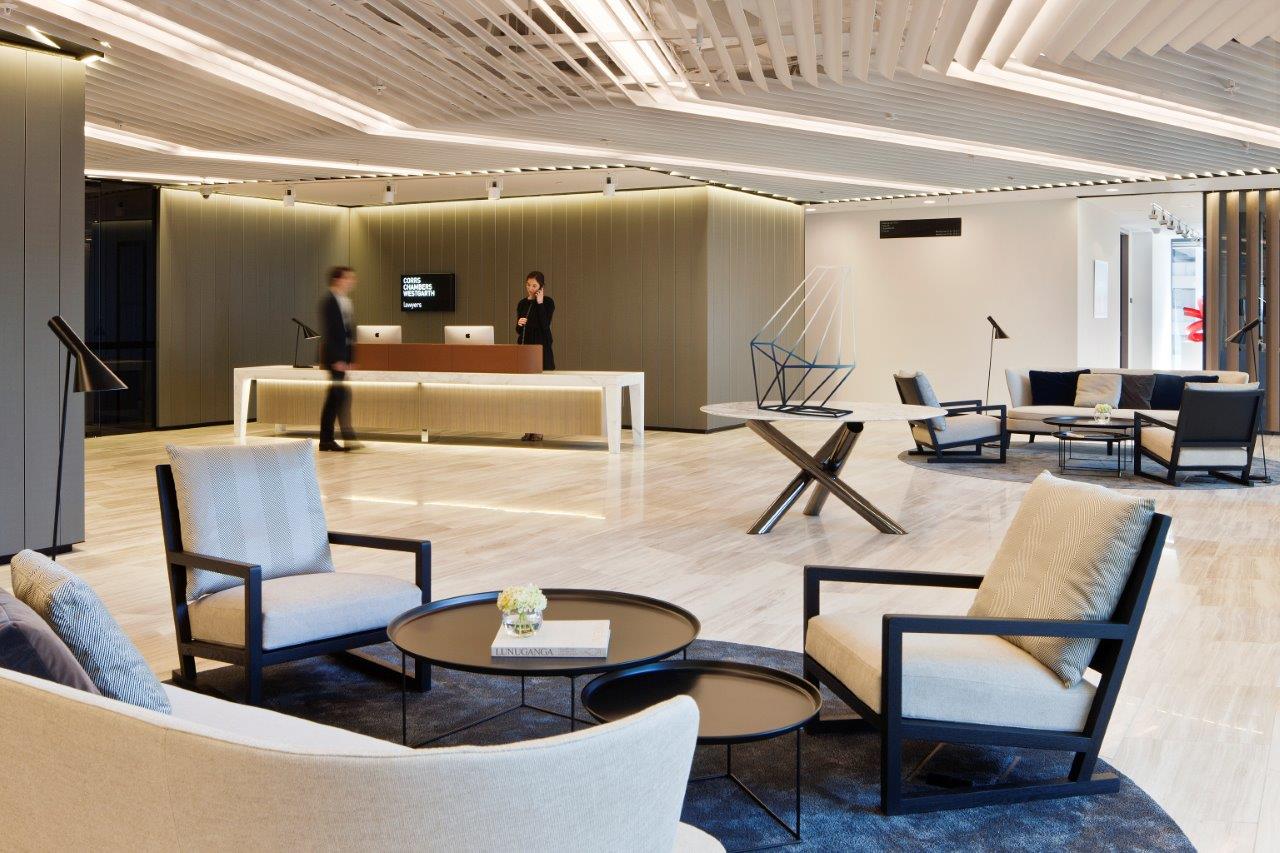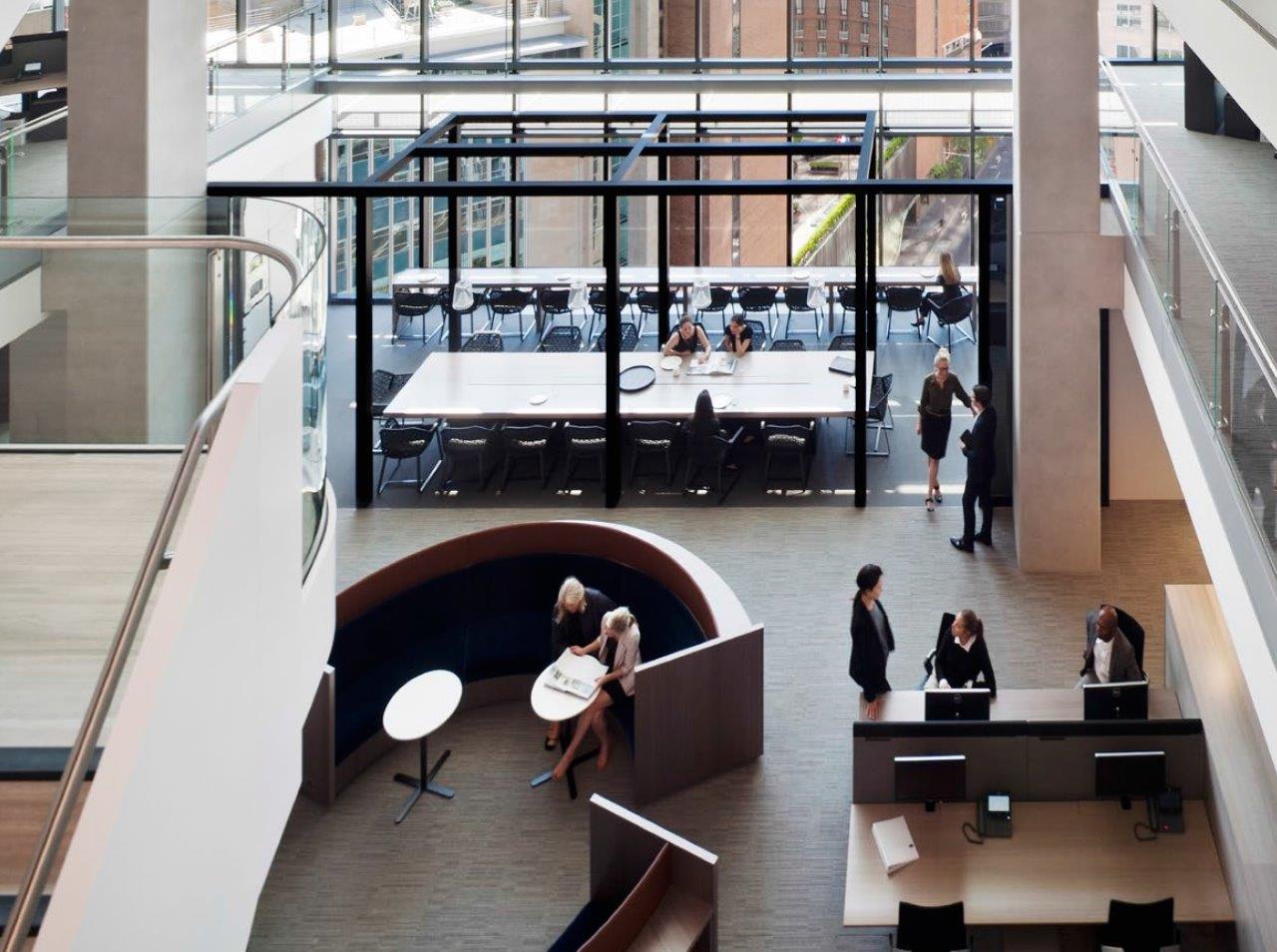THE fit out of legal offices has undergone a remarkable change over the past 20 years as technology has allowed the transformation from the traditional ‘one person, one office’ to open and collaborative spaces.
One of the best placed to observe this change is architecture firm Bates Smart.
Rather than rely on anecdotal evidence it has analysed the 100,000 square metres of legal office it has designed over two decades for its white paper The New Legal Workplace.
Through the analysis three trends have been identified in the modern office: lawyers are leaving their offices; lawyers are sharing space; and a new model is emerging.
Bates Smart associate director and workplace specialist Kellie Payne says the innovative technology introduced to the workplace over the past decade has allowed greater flexibility in terms of shared space when designing a legal workplace.

The open plan office is a cliché these days, met with some derision by its participants and is often a fancy way of saying ‘we’re putting you all in a tiny room with no privacy’.
The offices of today are much more than open plan.
“It is more like a tailored suit, understanding how a firm works, what tasks it is undertaking and making sure it has the best space possible to do those tasks,” says Payne.
The trend is for lawyers to be able to work in different parts of the office depending on what they are doing, but the hot desk model is not being taken up.
“We haven’t seen legal firms go to activity-based workplaces yet, they do tend to have some individually owned space, but supported by a much wider range of shared spaces.”
The end product of these shared spaces is a breakdown in “silos of knowledge”, encouraging lawyers and partners to talk amongst themselves in more social settings.
The process of designing a new office is a detailed one, with input coming from both the designers and the firm.

“I am yet to meet a legal firm doing a fit out which did not want to go back to consider the way it works from the first principles, it is a detailed and rigorous process,” says Payne.
“It covers how you work now and how you work in the future; a carefully considered planning process we go through with every law firm.”
There is also a practical element to the modern office: it is smaller, cutting costs in the post-GFC world. Offices are also being given the flexibility to expand and contract as needed, so the firm does not need to lease new space.
In the emerging model, knowledge is shared and colleagues are given the tools to work together more collaboratively, and firms are looking at how to better interact with clients.
“There is a greater emphasis on hospitality in some higher end firms looking to have a greater range of options to interact with clients,” explains Payne. Baristas, barbecues and dining rooms allow firms to entertain clients and socialise with each other.
“They bring people together as an entire team in a social situation, rather than work.”

Payne says most firms and their employees embrace a change to the way they work, but a detailed debriefing on the new space is essential.
“There is a long change management process for this kind of change to help staff find new ways of working.
"Quite often the document management system has been realigned so there is quite a lot of training and development done in house.
“If you put in an open-plan workstation and told lawyers to go free range, it could cripple the business.”
“A successful fit out requires a strong leadership buy in – they need to be on board with the change.”
How legal offices have changed
|
Get our daily business news
Sign up to our free email news updates.

)
)
)
)
)
)

